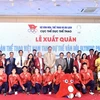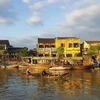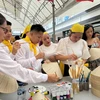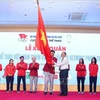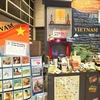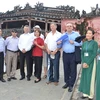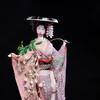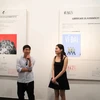Rapid modernisation and modern lifestyles are threatening the survival of the ancient Cham culture and other ethnic traditions in the central province of Quang Nam, home to two UNESCO-recognised world heritage sites and a world biosphere reserve.
The subject was the main focus of a conference in the province on April 3.
The conference was told that 337 physical relics, mostly buildings, and 120 cultural festivals are in danger of disappearing because of the increasing demands of economic development.
"It's an alarming problem. The increase in population and mass migration have badly affected cultural relics," said the deputy head of Hoi An city's Culture and Information Department Tong Quoc Hung.
"Old craftsmen are gradually dying out, taking knowledge of many folk arts and crafts with them. Few of young people show any interest in inheriting their skills and secrets," he said.
Hung also remarked on the move away from century-old traditional architecture in Hoi An City in recent years.
"Local people now prefer to refurbish their old houses so that they reflect modern times. One of the reasons for this is the influx of new residents uninterested in or unaware of Hoi An's precious links with the past," he said.
The Secretary of the Party Committee of Dong Giang district, Nguyen Bang, said the culture of the Co Tu ethnic mountain people has been affected by the intrusions of outside influences brought in by newcomers.
"Native customs and costumes are being taken over by modern lifestyles, education, economic development and culture," he said.
Bang admitted that the collection and conservation of the ancient culture of local ethnic groups have never been seriously approached or evaluated.
"The native language and customs play a key role in ethnic socio-economic development. It's also a precious treasure for the province in the future," he said, adding that the culture and customs of Co Tu ethnic minority should be included in the curriculum of high schools in the mountain districts of Dong Giang, Nam Giang and Tay Giang.
Bang also said the Co Tu culture should be included for protection under the National Target Programme.
At a tourism market workshop last year, Lucy Russell, the editorial manager of QUO, a travel agency, said the province has great history, tradition, culture and environment, as well as two world heritage sites and the world biosphere reserve of the Cham Islands . She said this is ideal for promoting sustainable tourism.
UNESCO, the International Labour Organisation (ILO) and the Food and Agriculture Organisation (FAO) have already provided some support for the promotion of craft-village tourism and world heritage sites.
Last month, the province officially opened the My Son community tourism village near My Son Sanctuary – a World Heritage Site. This is one of the first steps towards boosting eco-tourism and sustainable tourism.-VNA
The subject was the main focus of a conference in the province on April 3.
The conference was told that 337 physical relics, mostly buildings, and 120 cultural festivals are in danger of disappearing because of the increasing demands of economic development.
"It's an alarming problem. The increase in population and mass migration have badly affected cultural relics," said the deputy head of Hoi An city's Culture and Information Department Tong Quoc Hung.
"Old craftsmen are gradually dying out, taking knowledge of many folk arts and crafts with them. Few of young people show any interest in inheriting their skills and secrets," he said.
Hung also remarked on the move away from century-old traditional architecture in Hoi An City in recent years.
"Local people now prefer to refurbish their old houses so that they reflect modern times. One of the reasons for this is the influx of new residents uninterested in or unaware of Hoi An's precious links with the past," he said.
The Secretary of the Party Committee of Dong Giang district, Nguyen Bang, said the culture of the Co Tu ethnic mountain people has been affected by the intrusions of outside influences brought in by newcomers.
"Native customs and costumes are being taken over by modern lifestyles, education, economic development and culture," he said.
Bang admitted that the collection and conservation of the ancient culture of local ethnic groups have never been seriously approached or evaluated.
"The native language and customs play a key role in ethnic socio-economic development. It's also a precious treasure for the province in the future," he said, adding that the culture and customs of Co Tu ethnic minority should be included in the curriculum of high schools in the mountain districts of Dong Giang, Nam Giang and Tay Giang.
Bang also said the Co Tu culture should be included for protection under the National Target Programme.
At a tourism market workshop last year, Lucy Russell, the editorial manager of QUO, a travel agency, said the province has great history, tradition, culture and environment, as well as two world heritage sites and the world biosphere reserve of the Cham Islands . She said this is ideal for promoting sustainable tourism.
UNESCO, the International Labour Organisation (ILO) and the Food and Agriculture Organisation (FAO) have already provided some support for the promotion of craft-village tourism and world heritage sites.
Last month, the province officially opened the My Son community tourism village near My Son Sanctuary – a World Heritage Site. This is one of the first steps towards boosting eco-tourism and sustainable tourism.-VNA


